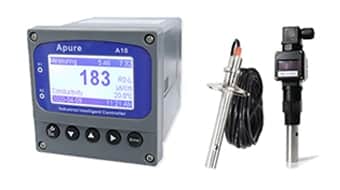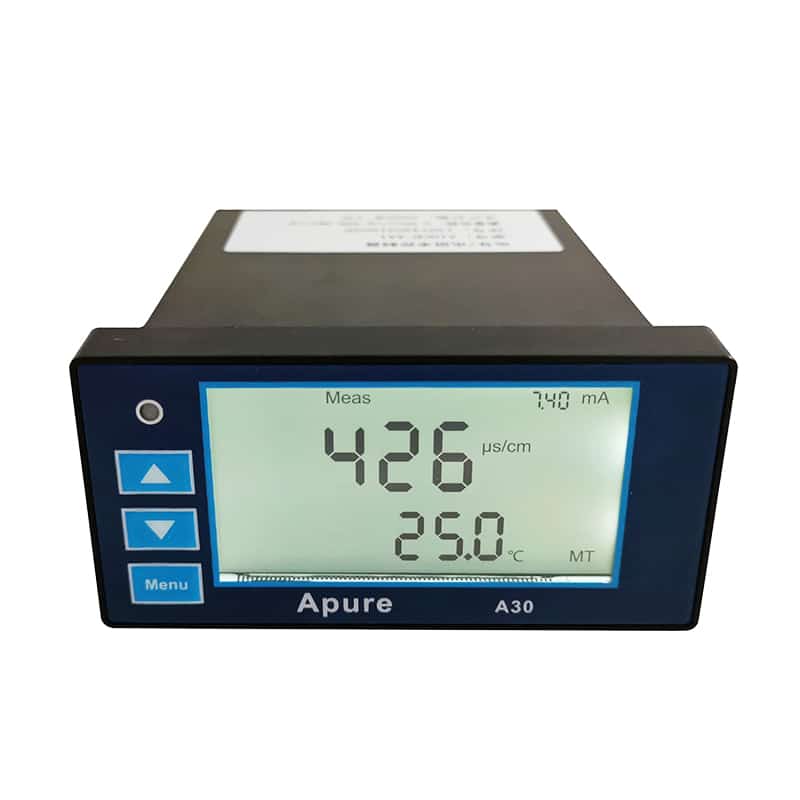Water is an essential resource in our daily lives, but sometimes our tap water can contain too much total dissolved solids (TDS) such as minerals and salts, resulting in less than optimal water quality. In this article, we will look at ways to reduce TDS in our water to ensure we enjoy clear and healthy water.
What is TDS?
TDS stands for “Total Dissolved Solids”, which translates to “Total Dissolved Solids” and refers to the sum of all solids dissolved in water, which can include minerals, salts, metal ions, inorganic substances, organic substances, etc. TDS is usually expressed in milligrams per liter (mg/L) or as a fraction. These dissolved solids can include minerals, salts, metal ions, inorganic and organic substances, etc. TDS is usually expressed in milligrams per liter (mg/L) or as a percentage to indicate the amount of dissolved substances in the water.
The measurement of TDS is an important indicator of water quality because high TDS water may have an effect on the taste, appearance and suitability of the water. Some water sources naturally contain high levels of TDS, while in other cases, high TDS water may result from an excess of salts, minerals or other dissolved substances in the water. In some applications, such as drinking water or industrial processes, the TDS in the water needs to be reduced to meet specific water quality requirements.
Methods to reduce TDS
Reverse osmosis (RO)
Reverse osmosis is a highly efficient method of removing most of the TDS from water by filtration through a semi-permeable membrane.This is a common method used for domestic water purification and industrial applications.RO systems are effective in removing salts, minerals, and other dissolved solids.

Reverse osmosis (RO) is a more convenient and widely used method due to the following advantages of RO systems:
- Efficiency: Reverse osmosis systems are highly efficient at removing most dissolved solids, salts, and minerals from water, making it clear and reducing TDS.
- Easy to install and use: Domestic RO systems are relatively easy to install and can be placed under the kitchen faucet to provide direct access to drinking water. Such systems are usually easy to operate.
- Wide applicability: Reverse osmosis is suitable for a wide range of water sources, including tap water, well water, river water, etc., so it can meet the needs of a variety of applications.
- Affordability: Reverse osmosis systems typically have relatively low maintenance costs, especially RO systems for home use. They do not require large amounts of chemicals or advanced technical support.
- Scalable: RO systems can be scaled up as needed to handle larger volumes of water for different sized applications.
Distillation
Distillation is the process of reducing TDS by heating water to the boiling point and then collecting the vapors and condensing them into pure water. this method is suitable for preparing high purity water.
Deionization (DI)
Deionization is a method of removing ions from water using ion exchange resins to reduce TDS. This method is common in laboratories, electronics manufacturing and other applications where high purity water is required.
Ion exchange
Ion exchange systems reduce TDS by replacing unwanted ions with more acceptable ones.This is very effective in softening water to reduce hard water ions such as calcium and magnesium.
Electrodialysis
Electrodialysis uses an electric field to push ions through a selectively permeable membrane, which separates them from the water and reduces TDS.
Chemical treatment
Chemical methods include coagulation and flocculation, where chemicals are added to cause dissolved substances to coalesce into small solid particles, which can then be removed from the water by filtration or precipitation.
Dilution
Dilution is the reduction of TDS by mixing high TDS water with low TDS water.This method can reduce the concentration of TDS water in some cases, but is not suitable for large scale applications.
Avoiding contamination
To prevent elevated TDS levels, measures need to be taken to protect the water source from contaminants such as agricultural pollution, industrial discharges, and overuse of fertilizers and salts.
The choice of methods to reduce TDS should be based on specific needs and water quality. When making a decision, it is also important to note that over-purifying the water may cause it to adversely affect plumbing and drinking water suitability.
How do I monitor TDS?
To monitor total dissolved solids (TDS) in water, you can use a TDS instrument or a measuring instrument, such as the A30 Digital TDS EC Meter.These tools, often referred to as TDS meters or TDS gauges, measure the amount of TDS in a water sample to determine the level of dissolved substances in the water. Below are the general steps to monitor TDS:
- Obtaining a water sample: First, you need to obtain a sample of the water you wish to measure TDS in. This can be tap water, well water, river water, lake water, or any other source of water you are interested in. Make sure that the sample is fully representative.
- Prepare the TDS instrument: If you have a TDS instrument, make sure it is calibrated and in good working order. Calibration usually requires the use of a standard buffer (usually a 1000 ppm standard) to ensure accurate measurements.
- Measuring TDS: Insert the electrode or probe of the TDS instrument into the water sample. Make sure that the electrode does not touch the bottom or side walls of the container to avoid being affected by impurities. Wait for a while until the measurement stabilizes and then record the reading. Typically, TDS is expressed in milligrams per liter (mg/L) or as a partial percentage (%).
- Cleaning and storage: Always clean the electrodes or probes after using the TDS instrument to avoid cross-contamination. Store the TDS instrument properly according to the manufacturer’s recommendations to ensure long-term performance.


Impact of TDS on water quality
TDS is the sum of dissolved substances in water, including minerals, salts, metal ions, inorganic and organic substances. It affects water quality in many ways, and the following are some of the important effects of TDS on water quality:
- Taste and odor: High TDS water often has an unusual taste and odor, which may include salty, bitter, metallic, or other off-flavors. This not only affects the taste of drinking water, but may also affect the flavor of food and beverages.
- Appearance: High TDS water usually causes the water to become cloudy or colored, which may affect the appearance of the water and make it unsuitable for drinking or use in cooking.
- Scale and sediment: Dissolved substances in high TDS water can lead to deposits of scale and sediment, which can negatively affect plumbing, water heaters and water heating equipment.
- Drinking water quality: High TDS water may contain metal ions such as lead, cadmium and chromium, which can be harmful to health. Therefore, consumption of high TDS water may lead to chronic exposure to harmful substances.
- Soil and agriculture: The use of high TDS water for irrigation may lead to soil salinization, making the soil unsuitable for crops. This may have a negative impact on agricultural yields.
- Environment: Discharges of high TDS water may have negative impacts on the environment, including harm to the survival and habitat of aquatic organisms.
- Industrial applications: In industrial processes, high TDS water may lead to corrosion of equipment, generation of waste and impact on productivity, thus requiring higher water quality.
- Swimming pool water quality: High TDS water may lead to turbidity and degradation of swimming pool water, which requires more maintenance and water quality management.

Overall, high TDS water not only affects the taste, appearance and suitability of water, but can also negatively impact health, the environment and various applications. Therefore, monitoring and managing TDS levels is important to ensure clear, safe and fit-for-purpose water. Where required, appropriate water treatment measures such as reverse osmosis, distillation or deionization can reduce TDS and improve water quality.
Difference between TDS and water hardness
TDS and water hardness are two water quality related parameters that are somewhat similar, but distinctly different:
TDS:
- TDS is the sum of all dissolved substances in water, including minerals, salts, metal ions, inorganic and organic substances.
- TDS is usually expressed in milligrams per liter (mg/L) or as a partial percentage to indicate the amount of dissolved substances in the water.
- The TDS measurement does not provide information on the specific type or chemical composition of dissolved substances; it is only a general indicator.
Water hardness:
- Water hardness is the amount of dissolved calcium and magnesium ions in water. These ions are usually in the form of Ca²⁺ (calcium) and Mg²⁺ (magnesium).
- Water hardness is usually expressed in units of hardness (mg/L or ppm) or grams per liter (gpg).
- Water hardness is a specific type of dissolved substance caused primarily by calcium carbonate and magnesium carbonate.
| Parameter | TDS | Water Hardness |
| Definition | The total sum of all dissolved substances in water. | The concentration of dissolved calcium (Ca²⁺) and magnesium (Mg²⁺) ions in water. |
| Main Components | Minerals, salts, metal ions, organic substances, inorganic substances, etc. | Calcium (Ca²⁺) and magnesium (Mg²⁺) ions. |
| Units | Usually expressed in milligrams per liter (mg/L) or as a percentage. | Typically measured in hardness units (mg/L or ppm) or grains per gallon (gpg). |
| Information Provided | A general indicator of overall water quality but does not provide information about specific minerals or ions. | Provides specific information about the concentration of calcium and magnesium ions in water. |
| Relationship to Water Quality Characteristics | Can be caused by various types of dissolved substances, including metals, salts, minerals, and organic matter. | Primarily caused by calcium and magnesium ions, making it an indicator of water hardness or softness. |
| Application Areas | Used to measure the overall level of pollution in water but does not provide specific water quality characteristics. | Used to assess water hardness or softness and its impact on plumbing, water heating equipment, and industrial processes. |
| Examples | Seawater typically has high TDS due to the presence of various salts and minerals. | Groundwater may have varying degrees of hardness depending on the concentration of calcium and magnesium ions. |
Summary
To reduce TDS in water, a variety of methods such as reverse osmosis, distillation, deionization, ion exchange, electrodialysis, chemical treatment, and dilution can be used. The choice of method should be based on specific needs, such as drinking water, industrial use or laboratory research, and to avoid contamination of the water source to prevent elevated TDS levels.
Apure offers not only TDS meter sensors etc., but also meters and sensors for parameters such as pH, ORP, conductivity, dissolved oxygen, chlorine, salinity, ozone and corrosion rate. Feel free to contact us.
